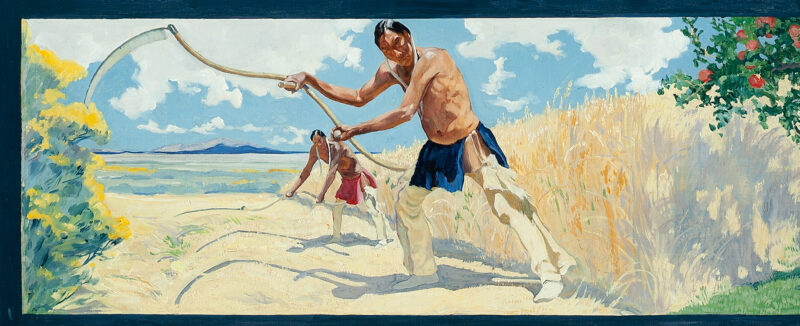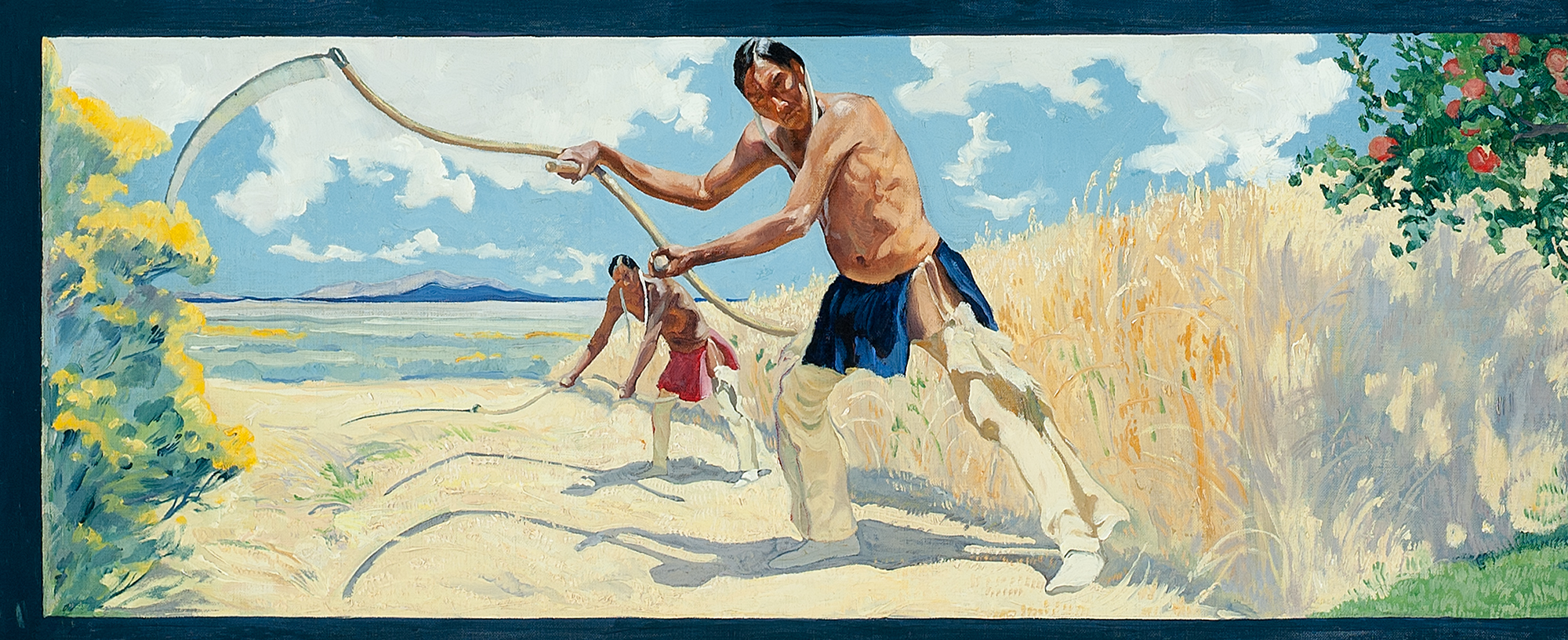
Hurd House Frieze (Harvest)
Ufer, Walter
1924
Artwork Information
-
Title:
Hurd House Frieze (Harvest)
-
Artist:
Ufer, Walter
-
Artist Bio:
American, 1876–1936
-
Date:
1924
-
Medium:
Oil on canvas
-
Dimensions:
14 3/4 x 34 3/4 inches
-
Credit Line:
Wichita Art Museum, Gift of the Estate of Mr. L.R. Hurd
-
Object Number:
1945.1.1
-
Display:
Not Currently on Display
About the Artwork
Walter Ufer, who was one of the ten original founding members of the Taos Society of Painters, came to Taos, New Mexico, seeking inspiration for the creation of a uniquely American art. Although the academically trained Ufer retained his commitment to a realistic figurative style, he embraced the modernist fascination primitive and exotic themes. The remote, rugged, and often fantastic landscape of the Southwest together with the survivals of the ancient Amerindian and Hispanic cultures that had once dominated the region satisfied Ufer’s desire for engagement with a place that was authentically American.
The Hurd House Frieze is a unique document in an oeuvre otherwise devoted to easel paintings, but it is fully representative of the southwestern subjects and the vivid, often decorative coloration and bravura brushwork that earned Ufer national success in the 1920s. Louis Rogers Hurd, president of the Red Star Mill in Wichita, Kansas, commissioned Ufer to paint a frieze for the dining room of his Italianate home at 401 N. Belmont.[1] Arguing, not quite accurately, that Wichita and Taos were linked in the history and geography of the Santa Fe Trail, Ufer selected the theme of a 19th century journey through Taos Valley, depicting in a continuous narrative pioneer wagons on the Santa Fe Trail, native American pueblo and southern plains cultures, as well as varied aspects of the Taos climate and topography. To compliment the function of the room Ufer chose to represent autumn and scenes of harvest, hunting, and fall festival dances and to celebrate an ideal of man in harmony with a bountiful nature.
Ufer employed the conventions established in antiquity to render a legible narrative in frieze format, that is, a narrow band of pictorial space placed well above the viewer’s eye level. He placed his principal figures on the foremost ground line of the picture plane so that their broadly modeled shapes stood out against the compressed space of the background. Employing a sequence of animate shapes in the bold gestures and postures of the figures, a repetition of strong hue and value contrasts, and the recurrence of a dominant yellow and blue palette throughout, Ufer united the disparate scenes into a stimulating rhythmic pattern. Ufer’s characteristic emphasis upon a bright, high key color palette, often employing decorative rather than naturalistic hues, encouraged other members of the Taos school to abandon Barbizon coloration for a more emotive, decorative use of color.
The decades of the 1920s, 1930s and 1940s marked a period of lively exchange between Wichita artists and patrons and the independent art colonies of the Southwest, contributing significantly to the artistic sophistication of the city. The acquisition of the Hurd House Frieze thus contributed an important document of local history as well as of American art history to the Wichita Art Museum collection.
[1] L. R. Hurd was a member of the Wichita Art Association, and upon his death he bequeathed the home to the Wichita Art Association. The main house and its carriage building functioned as the business, gallery and studios of the Association from 1942 until the 1980s.
